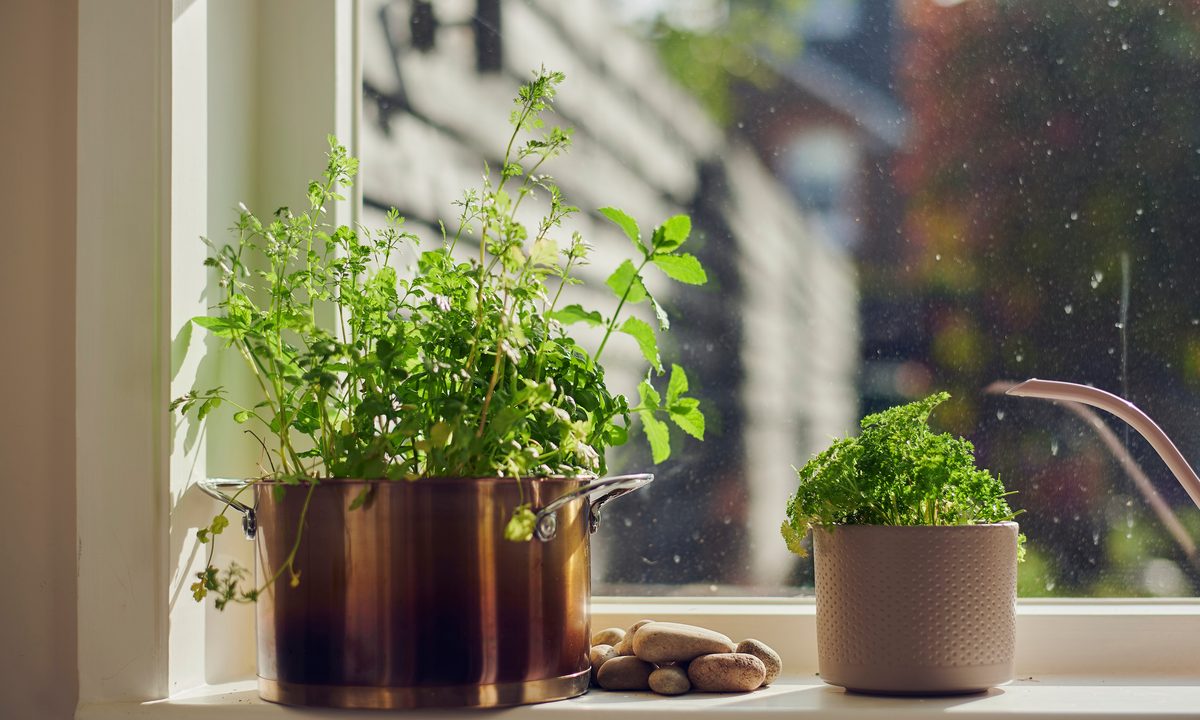Medicinal herbs and plants are useful tools to keep around. While they can’t replace medicine for more serious problems, these plants can help treat minor ailments and discomforts like sunburns, colds, and stomach aches. Luckily, most plants with medicinal uses are also easy to grow and care for! You can grow medicinal herbs in your garden, but moving plants indoors can be challenging. When you want to grow medicinal herbs for your indoor herb garden, you have options. Here are four medicinal herbs to grow indoors.
Growing plants indoors: The basics
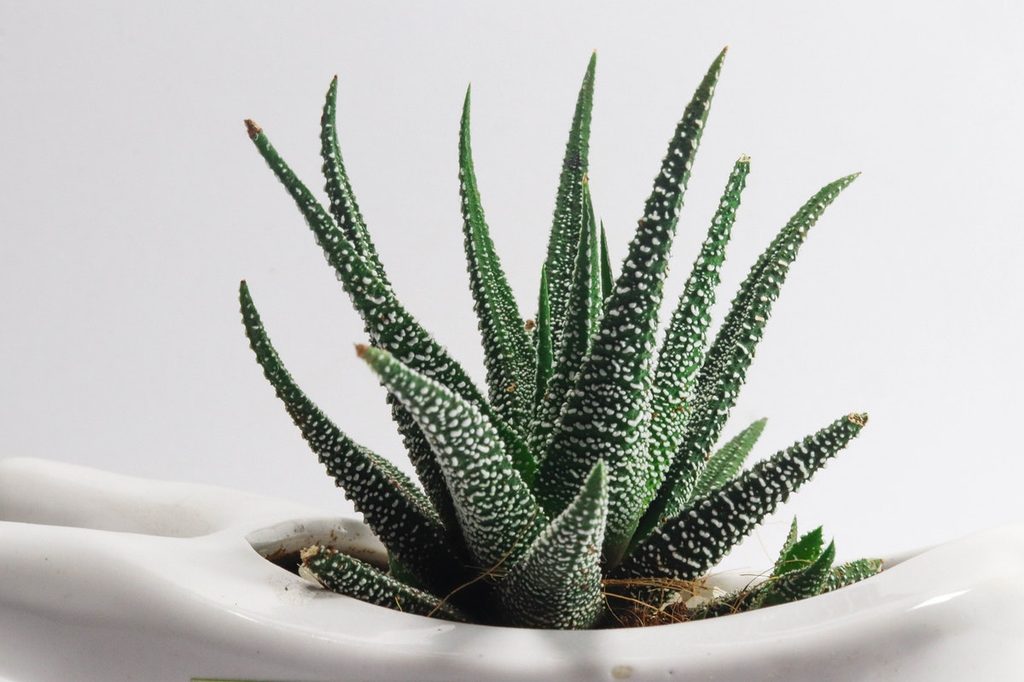
When you grow any plant indoors, consider these tips:
- Determine your light source — The sun’s movements will determine if you have low or high light at a certain window. North-facing windows have the gentlest (i.e., the least) light, while south-facing windows have the brightest (i.e., the harshest) light.
- Check your pots — Plants need water, but they also need aeration around the roots. Ensure your pots have good drainage for healthy root growth.
- Find an indoor fertilizer — Plants will need fertilizer made for potted plant life because the natural biome of soil isn’t present. Find an option specifically for potted plants and follow application directions.
Once you’ve got your location, water, and soil the requirements down, you can begin to grow these four easy herbs.
Lemon balm
Lemon balm is a member of the mint family and grows well in part shade, making it perfect for an indoor pot. The sun gently warms the leaves, releasing some of the fragrant citrus-like oils, and the leaves are a beautiful shape and color. It is best grown from cuttings or live plants, so head to your local nursery or even big-box store. It’s great to dry and use in a tea, or the leaves add a zesty element to salads. It has a mild sedative-like effect thought to ease anxiety symptoms in some cases.
Cut the stalk down to one set of double leaves to harvest, and the plant will quickly grow back all year long. You can also transplant it into a garden later on, and it won’t take over the way its mint cousins will.
Aloe
Aloe is a succulent, most famous for its burn-soothing gel, but it’s a super-easy houseplant addition. It can grow somewhat slowly but tolerates some neglect in watering and prefers partly shaded or dappled sunlight — another perfect indoor condition. Aloe must be grown in soil specifically made for succulents or cacti. Normal garden or potting soil can cause root rot. Water once every 10 to 14 days or when the soil is dry 3 inches from the top.
Harvesting aloe is easy, as well. Use a clean, sharp pair of scissors and remove one of the bottom leaves entirely. Open the leaf and scrape out the gel to put on your skin or add to your smoothie.
Tulsi (holy basil)
Basil itself is a wonderful herb to grow indoors, but this specific basil variety, holy basil (aka tulsi), is a sure thing. It’s a sacred folk herb in many parts of the world, and the aroma is thought to release stress. Use it in a medicinal tea for a variety of conditions, including headaches and respiratory issues.
Tulsi can be weak when started from seedlings, but keep the soil moist and temperatures consistently warm. The plant will thrive in full sun in temperate climates but appreciates some shade in tropical areas. It’s best in a south-facing window, but keep an eye on the water. To harvest, cut the stalk down to a set of two leaves. Removing only the leaves from the plant will leave you with leggy basil. Remove the leaves and flowers for your tea.
Peppermint
The mint family does exceptionally well indoors as long as you keep the soil moist but never soggy. Peppermint is best in a container anyway because of its aggressive spreading habit, but it works well in a south or east-facing window indoors. Peppermint requires consistent moisture, but you never want it to get soggy feet. Harvest mint and keep it compact by regularly cutting or pinching stems off at the site of two leaves. You can use the stem and leaves in tea or for infusions in desserts.
What plants can you use for medicine?
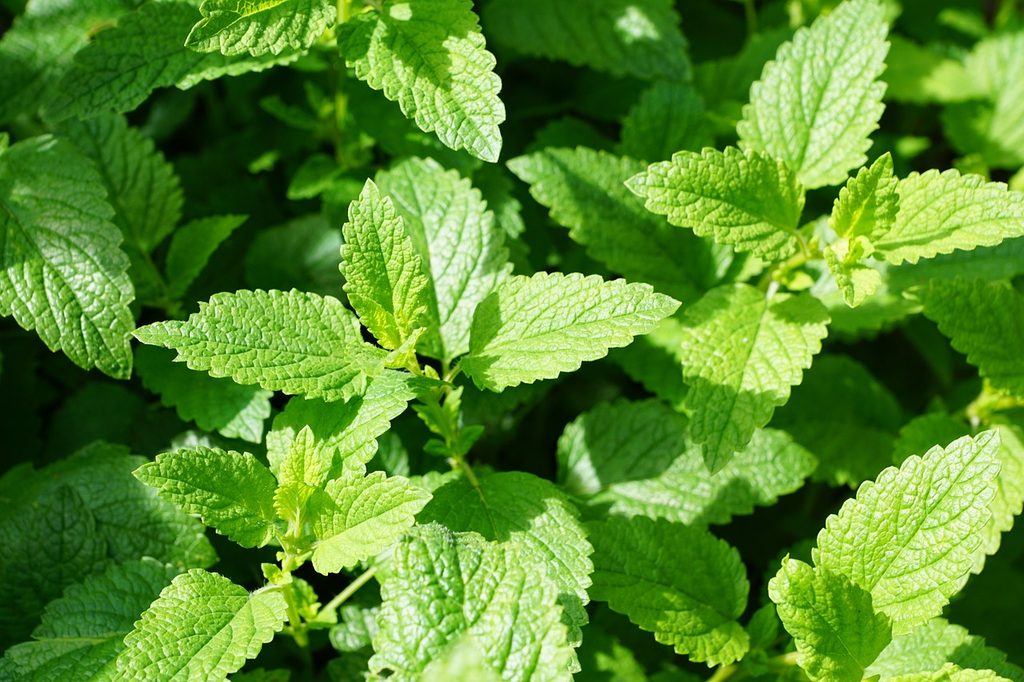
Once you get into the practice of growing herbs, you’ll discover that many of your favorite plants could have medicinal uses. Plant life forms the basis of many of our medicines, and the list is hundreds of species long. We recommend getting to know these four herbs and slowly add to your collection as you become more familiar. In some cases, not all parts of the plant are suitable for ingestion or topical use.
What are the 10 medicinal plants approved by DOH?
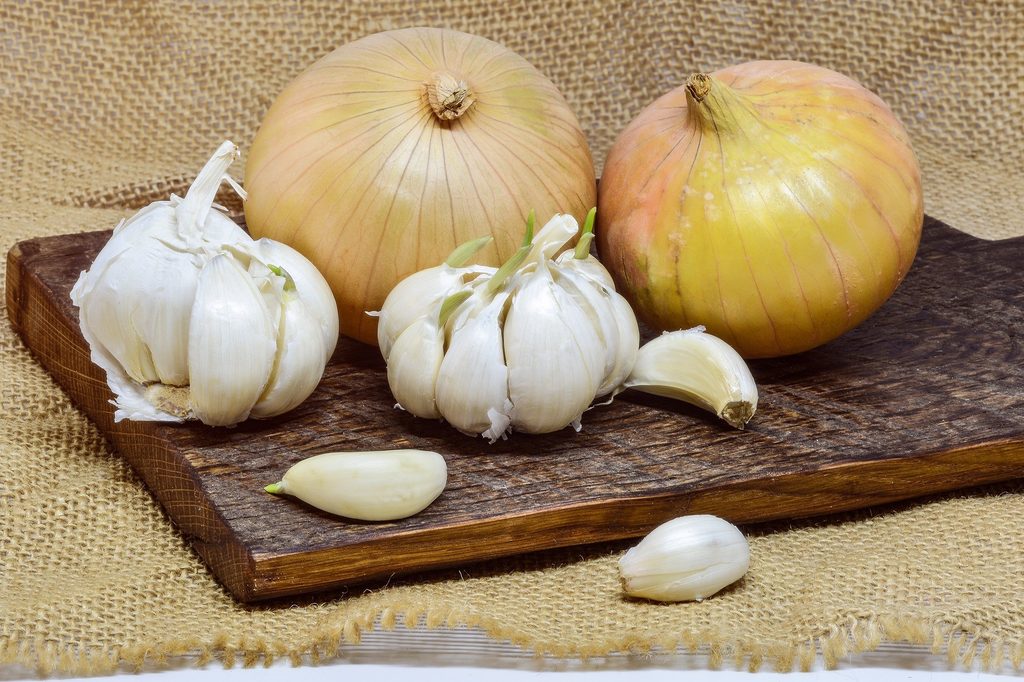
If you’re growing in a specific region of the world and need guidance, these are currently the 10 DOH-approved medicinal plants:
- Allium sativum (garlic)
- Blumea balsamifera (nagal camphor)
- Cassia alata (ringworm bush)
- Clinopodium douglasii (mint)
- Ehretia microphylla (scorpion bush)
- Momordica charantia (bitter melon)
- Peperomia pellucida (silverbush)
- Psidium guajava (guava)
- Quisqualis indica (rangoon creeper)
- Vitex negundo (five-leaved chaste tree)
These unique herbs can add interest to your medicinal herb garden and relieve specific conditions. Always talk to your health-care professional about your medicinal herb use.
Growing what you need indoors
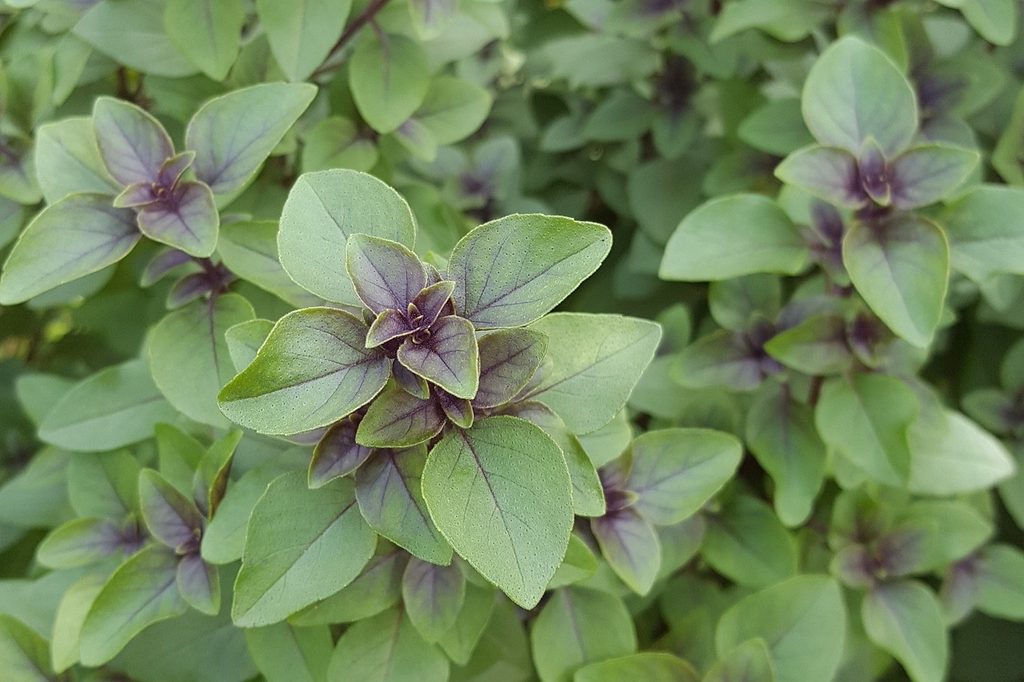
Just because your weather, climate, or even space prevents you from growing herbs outdoors, you don’t have to give up growing medicinal herbs entirely. Start with these four easy recommendations and expand as you have space and conditions. It’s a rewarding activity and well worth the effort.
Storing excess for later
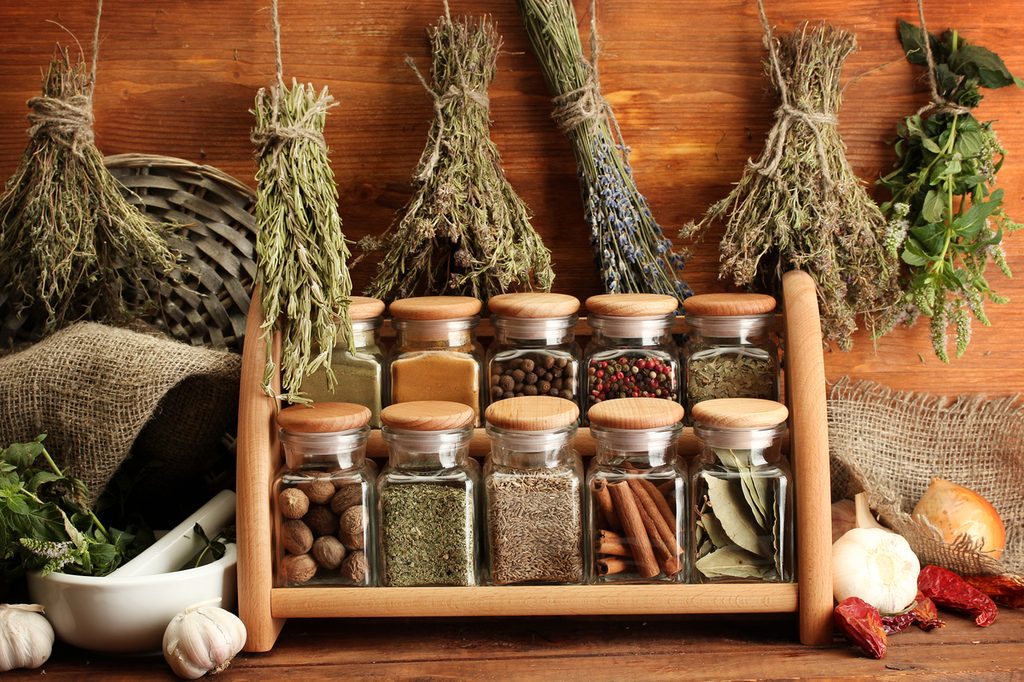
If you’ve accidentally harvested more than you need, you might be upset at letting some of your plants go to waste. Luckily, most herbs are easy to store. For most plants, the leaves, stems, flowers, and seeds can all be dried and stored in a bag or bottle. If you’re storing a whole stem, you can hang it upside down in a dry, dark place with decent airflow. If you’re trying to store individual leaves, flowers, or seeds, then you can sun dry them or place them in an oven or dehydrator. Once they’re dry, store them in your preferred container.
Aloe is a bit different. Since the part of the plant that’s used is the gel inside the leaf, it needs to stay hydrated in order to be used. If you plan on using the rest of the leaf quickly, you can wrap the cut end in foil, beeswax, or a damp paper towel and place it in the refrigerator. For longer storage, you’ll need to remove the gel from the leaf and store it in a container in the freezer.
